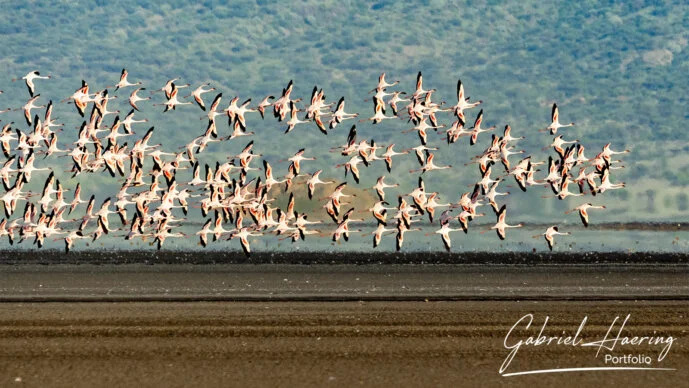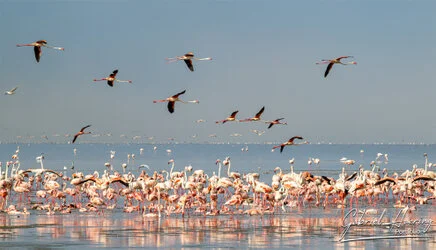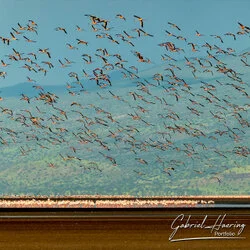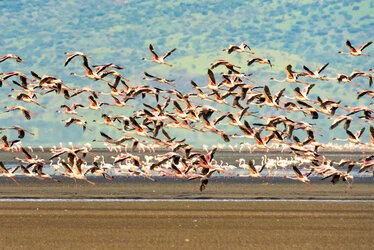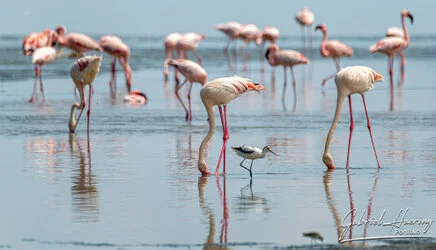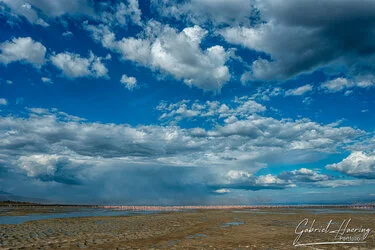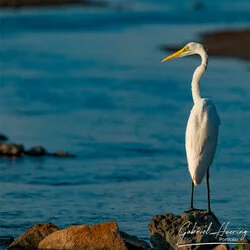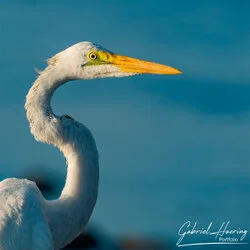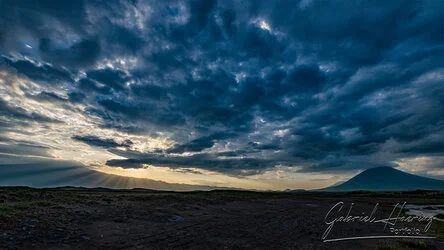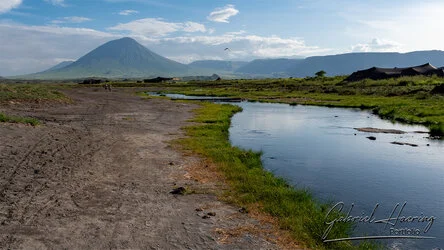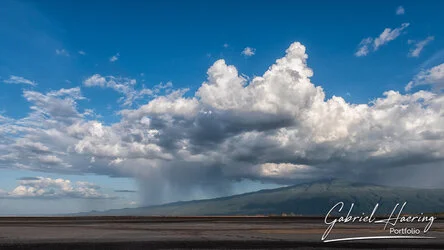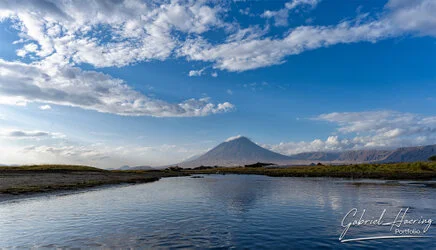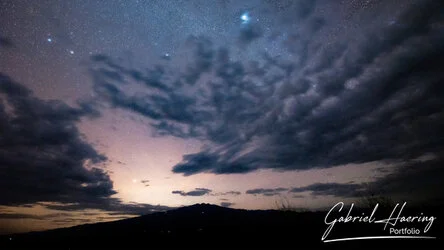Photographic Safari Lake Natron Portfolio by Gabriel Haering
Menu 2 > Portfolio
Lake Natron Safari: Tanzania’s Flamingo Sanctuary and Rift Valley Wonder
By Gabriel H., Co-Founder of Endelevu Tours and Safaris & Wildlife Photographer
Introduction: An Untouched Jewel in Tanzania’s Rift Valley
Nestled deep in the Great Rift Valley, far from the well-trodden safari circuits of Serengeti and Ngorongoro, Lake Natron offers an experience unlike any other in Tanzania. Known for its vibrant red waters, dramatic landscapes, and thriving colonies of lesser flamingos, this extraordinary lake combines rare wildlife, breathtaking geological phenomena, and rich cultural traditions. As a wildlife photographer and safari guide, I can confidently say that Lake Natron is a must-visit for anyone seeking an authentic, off-the-beaten-path African adventure.
Why Visit Lake Natron?
The Science Behind the Beauty
Lake Natron sits at approximately 600 meters above sea level, near the Kenya border. It owes its name to the mineral natron — a naturally occurring mixture of sodium carbonate and sodium bicarbonate. These minerals, combined with high evaporation rates, create extremely alkaline waters with pH levels often exceeding pH 12, nearly as caustic as household ammonia. The lake’s unique conditions allow cyanobacteria to thrive, producing reddish pigments through photosynthesis that give the lake its iconic crimson appearance.
Despite these extreme conditions, Lake Natron supports a thriving ecosystem. It is the only regular breeding ground for 2.5 million lesser flamingos in Africa. These elegant birds feed primarily on the red algae (Spirulina), whose rich beta-carotene pigments also turn the flamingos' feathers pink.
The lake’s mineral-rich environment sometimes leads to natural mummification of birds and other animals that perish in its waters, contributing to the lake’s mythological reputation as "The Deadly Lake" or "Lake Medusa." However, this reputation is largely exaggerated — many species, including various fish, invertebrates, and birds, thrive in this specialized habitat.
A Photographer’s Paradise
Lake Natron offers some of the most spectacular photography opportunities in all of East Africa. Early mornings present mirror-like reflections of flamingos against the vivid backdrop of Ol Doinyo Lengai ("Mountain of God"), the only volcano on earth that emits carbonatite lava — a rare and strikingly pale form of molten rock.
Tips for photographers:
- Best times: Sunrise (5:30–7:00 AM) and late afternoon golden hours.
- Recommended gear: Telephoto lenses (300mm+), wide-angle lenses for landscape shots, ND filters for long exposures.
Photographers visiting Lake Natron are in for a treat, as the lake’s surreal landscapes and wildlife provide endless opportunities for unique shots. Here are some tips to maximize your photography experience:
- Capture the Flamingos: Visit during the dry season to photograph the thousands of lesser flamingos that nest on the lake’s flats. Early morning light is ideal for capturing the vibrant pink colors of the birds against the stark, white salt flats.
- Embrace the Reflections: Lake Natron’s shallow waters create stunning reflections, especially at sunrise and sunset. Use these times to photograph the mirrored landscapes of the lake, the nearby volcano, and the flamingos.
- Wide-Angle for Landscapes: The vast, barren salt flats and the looming Ol Doinyo Lengai volcano offer incredible landscape shots. A wide-angle lens will help you capture the scale and uniqueness of the area.
- Protect Your Gear: The high alkalinity of the lake can be damaging to equipment. Carry protective coverings for your camera, and avoid getting too close to the lake's caustic waters to keep your gear safe.
Whether you’re a wildlife enthusiast, photographer, or nature lover, Lake Natron offers an unforgettable experience while also highlighting the importance of sustainable travel.
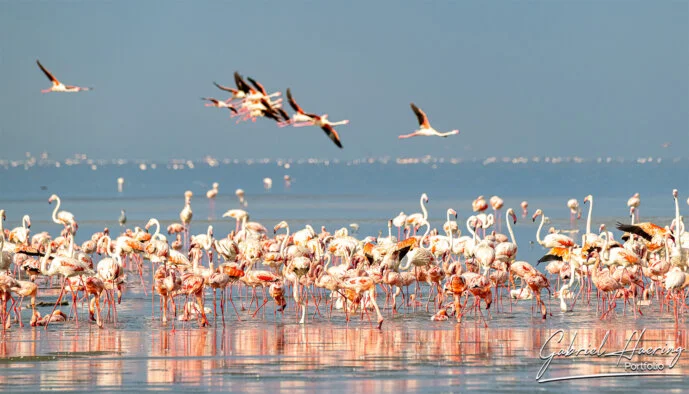
Cultural and Historical Riches
Lake Natron is not only a natural wonder but also a place of immense spiritual significance to the Maasai people. The nearby Ol Doinyo Lengai volcano is revered as the dwelling place of Enkai (or Engai), the Maasai deity. Visitors may witness traditional Maasai bomas (homesteads), learn about their pastoralist lifestyle, and gain insights into centuries-old customs that have remained largely unchanged.
Just beyond the lake, this region also sits within the Gregory Rift, a segment of the East African Rift System. This area, known as the "Cradle of Humanity," has yielded remarkable paleoanthropological discoveries that help illuminate human evolutionary history.
For visitors interested in prehistory, optional excursions to nearby Olduvai Gorge — home to some of the earliest stone tools and hominin fossils — offer a powerful connection to humanity’s ancient past.
Adventure Activities Beyond Flamingos
While the flamingos steal the spotlight, Lake Natron offers plenty for adventurous travelers:
- Engero Sero Waterfall Hike: A cooling trek through narrow gorges to reach crystal-clear natural pools.
- Ol Doinyo Lengai Volcano Climb: A strenuous overnight ascent (approximately 6 hours) that rewards climbers with breathtaking sunrise views.
- Mudflat Walks: Guided explorations across the salt-encrusted flats to witness flamingos up close.
Note: Climbing Ol Doinyo Lengai requires physical fitness and proper preparation due to steep gradients and altitude. Always climb with certified local guides.
Practical Travel Tips: Routes, and Logistics
Routes & Driving Advice:
- From Serengeti (via Kleins Gate): Break the journey with an overnight near Kleins Gate; expect a scenic 4-5 hour drive to Lake Natron.
- From Arusha: Either take the southern route via Engaruka and Mto wa Mbu (~5 hours total) or the western route via Longido (~7 hours).
We recommend spending 2–3 nights at Lake Natron to fully explore its unique offerings without feeling rushed
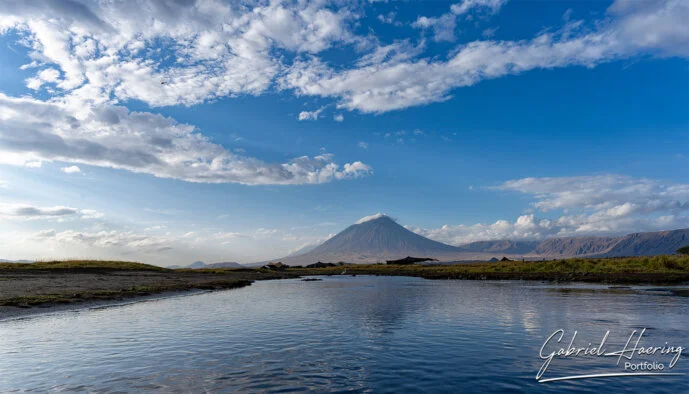
Health, Safety & Responsible Travel
Travelers should be aware that this is a malaria zone, and vaccines for Hepatitis A, Typhoid, Tetanus, Polio, and Yellow Fever are generally recommended. Consult your healthcare provider well before departure.
At Endelevu Tours, we proudly adhere to ethical tourism principles, working closely with local communities and Maasai guides to ensure fair wages, environmental protection, and cultural respect. Our partnerships reflect our commitment to sustainable travel that benefits both visitors and residents alike.
Best Time to Visit Lake Natron
Months Highlights
June – October (Dry Season) Comfortable weather, dramatic scenery, excellent photography conditions
December – January Peak flamingo hatching season, thousands of chicks lining the shores
Rest of the year Hotter temperatures; access may be more challenging during long rainy seasons (March-May)
Lake Natron — A Journey Beyond Ordinary Safaris
For travellers who seek tranquillity, unspoiled wilderness, scientific wonder, and genuine cultural interaction, Lake Natron delivers an unforgettable experience. Whether you are a nature enthusiast, adventure seeker, or passionate photographer, this lesser-known jewel of Tanzania offers something profoundly unique — and deeply moving.
